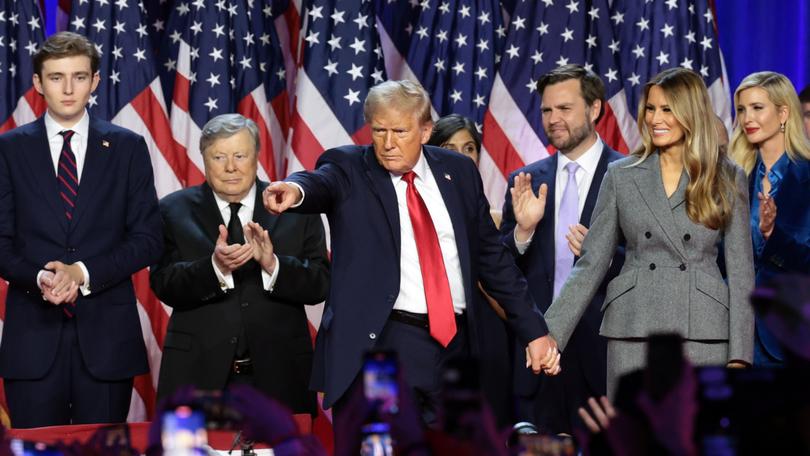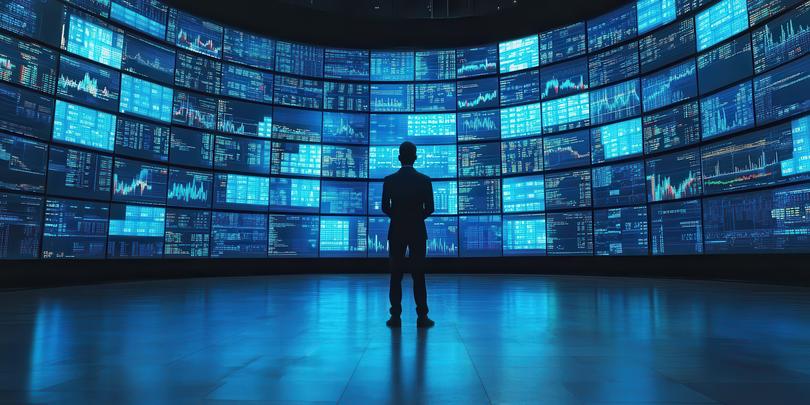The Economist: Why financial markets are so oddly calm after President-elect Donald Trump’s victory

One thing nobody thinks of Donald Trump’s return to the White House is that it will herald four years of quiet, predictable government.
Here, then, is a puzzle for readers interested in the more abstract bits of finance.
Why was Mr Trump’s re-election greeted by resounding drops in volatility all across the world’s most important markets?
Sign up to The Nightly's newsletters.
Get the first look at the digital newspaper, curated daily stories and breaking headlines delivered to your inbox.
By continuing you agree to our Terms and Privacy Policy.First, a primer for those who slept through Quantitative Finance 101.
Volatility is commonly used as a proxy for uncertainty or risk, and describes how much asset prices fluctuate.
Historical volatility measures the spread of past daily price movements, telling you how far you should expect any given value to be from the average.
Say, for instance, you are told that a stock market index has had an average annual return of 10 per cent, with a volatility of 20 per cent.
That means that in roughly two-thirds of previous years, the index’s returns were somewhere between -10 per cent and 30 per cent.
Higher volatility would have meant more turbulent markets and a wider range.
Lower volatility would have meant a tighter range and more millpond-like markets.
So much for the rear-view mirror — investors care more about what lies ahead.
This, of course, is harder to determine.
But if the market expects big swings in prices, traders will seek more insurance against such swings than they would if they expected conditions to be placid.
These expectations, therefore, dictate the cost of insurance contracts, or “options”.
Apply some maths worked out in the 1970s by Fischer Black and Myron Scholes, two economists, and you can work backwards, converting options prices into “implied volatility”.
You now have the market’s collective judgment on how jumpy asset prices will be.
The surprise is that, as traders rushed to price in Mr Trump’s sweeping victory, the collective judgment reached in the biggest markets of all was: “a lot less jumpy than before”.
Election day set off a plunge in the VIX index, which measures the implied volatility of the S&P 500 share index of large American firms.
The MOVE index, the equivalent for dollar interest rates, followed suit.
So did the volatility of the exchange rate between dollars and euros, the world’s most heavily traded currency pair, and of that between dollars and yen, the second-most-traded pair.
Share prices soaring on the promise of tax cuts are one thing.
The idea that investors believe another Trump presidency will make financial markets less risky is harder to fathom.

Mr Trump threatens to widen a fiscal deficit that already yawns, impose tariffs reminiscent of those in the 1930s and undermine an international order that provides a foundation for firms’ supply chains.
Perhaps investors’ returns will be stellar in spite of all that.
Few, though, think their risk of losses has ebbed away, and even fewer that the world has just become a more predictable place.
Instead, this is a rare moment in which the differences between volatility and risk — concepts investors often use interchangeably — are crystal clear.
Volatility is a tightly defined calculation.
It is the standard deviation of price fluctuations expected over a set timeline (30 days for the MOVE and the VIX), assuming they are distributed along a bell curve and that options are priced accordingly.
If, say, an election falls within the chosen timeline, the volatility of affected asset prices will duly rise to account for the difference in possible outcomes.
It will then fall once the outcome is known and prices themselves have incorporated it.
Volatility is therefore an excellent tool for modelling some of the randomness that drives financial markets.
Some, but not all.
In reality, the randomness of both markets and the world they reflect is wilder than this.
Extreme events (think of wars, financial crises or pandemics) occur far more often than a well-behaved bell curve would suggest.
It is often impossible to attach a distribution of probabilities to their potential outcomes, or even to specify the full range of these.
They certainly don’t come with tightly defined timelines.
Good luck mapping out how each chain of events that could follow a Chinese blockade of Taiwan would affect the euro-dollar exchange rate.
An instinctive understanding of risk allows for this wild randomness in ways that a statistical measure such as volatility cannot.
That is especially true for options traders, who, if asked for a contract insuring against too extreme a move, will simply name a price high enough to dissuade the buyer.
Investors, in other words, do not think Mr Trump’s presidency will be predictable.
They think its unpredictability is unpriceable.
Originally published as Why financial markets are so oddly calm
